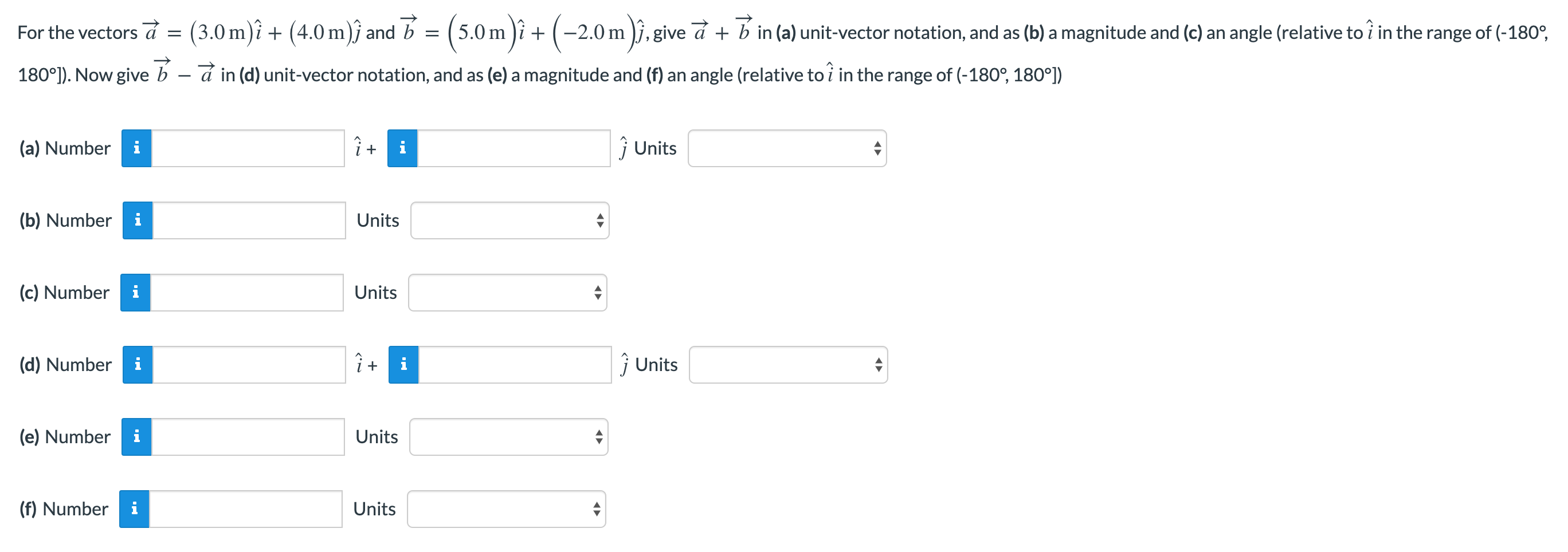For the vectors a→ = (3.0 m)i^ + (4.0 m)j^ and b→ = (5.0 m)i^ + (−2.0 m)j^, give a→+b→ in (a) unit-vector notation, and as (b) a magnitude and (c) an angle (relative to i^ in the range of (−180∘, 180∘)). Now give b→ − a→ in (d) unit-vector notation, and as (e) a magnitude and (f) an angle (relative to i^ in the range of (−180∘, 180∘) (a) Number i^ + j^ Units (b) Number Units (c) Number Units (d) Number i^ + j^ Units (e) Number Units (f) Number Units
